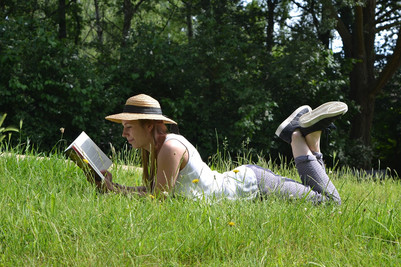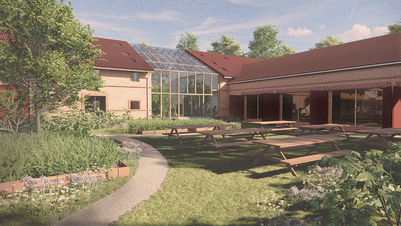
Coronablog on the Periphery | Kirsten Marie Raahauge

CORONABLOG THE PERIPHERY II: GAZING AT THE CITY
An elderly man, living in Tønder, is happy to see the small children coming by his window every morning a little to eight and again at midday. After weeks of nobody in the streets, school has opened for the small children, so now, there is life in the streets for the first time in weeks. As he says, apart from that, it is Good Friday every day. The empty streets are not causing any anxiety or discomfort, he states, but now, when life returns, he finds it very enjoyable to see the children in the street.
When living our social lives, we often focus on the act of being together, on the social relations where we stay in the same room, talk together and maybe eat or drink something together with each other. Relation is superior to individual, according to anthropology, as also, social relations is the basis of society. The dreary feeling of a repetition of nobody in the streets of Tønder highlights another side of being part of society: the importance of the gaze.
Kasper Nefer Olsen in the text Grid N0 45, Hvor blev hullerne i skalaen af? [what happened to the holes in the scale?] (2001) suggests three spatial types: inderrum, or the inner space (of the interior that you know), yderrum, or the outer space (of the exterior that you explore) and overrum, the over space (of the overviewing space with yourself in it, EG the map).
Once, when teaching a course about weapons (2011, together with Ivar Tønsberg, Tau Ulv Lenskjold and Rasmus Spanggaard Troelsen), Grid N0 45 was part of the curriculum, and one of the students (sadly, I cannot remember his name) wrote an essay about the three gazes that you might think of as attached to the three spaces. He was working with the tank. Inside, you could be covered, but gazed at from the outside. Outside, you could gaze at the tank, but without protection. So, you could become a target, but the possibilities of attack and defense were very different, as a consequence of your positioning in these spaces and under these gazes. The over gaze, or the gaze from above, was, as far as I recall, the gaze that sees these gazes of the inside and the outside. I imagine, it might be the map again, or the general and his strategies.
Inside the tank, or inside the house, or outside of them, the gazes are attached to voyeurism and exhibitionism in psychoanalysis, while in anthropological dealing with social relations, the gazes are part of the social web that we are enmeshed in. We might have hard times not to be together with other people in the same space, be it inside or outside. It might be even worse, however, not to be enmeshed in the web of gazes, looking from the inside and out, or peeping in from the outside. The state of exception of no gaze is a difficult social condition.
Instead many of us gaze into the screens of our computer; here, the many others we meet through this media are gazing and talking, but the gazes point in all kinds of directions, since we cannot look each other into the eyes. We are part of a gathering, without being present. The other gaze of these media sessions, the one that collects our Big Data and thus keeps us under surveillance, the the polyopticon, also brings about a difficult as social condition. We have yet to see, what this brings us, after the corona times. Now, we have gotten used to gazing into the computer without always recognizing that we are looked at from the over space.
References
Olsen, Kasper Nefer 2001 Grid N0 45, Hvor blev hullerne i skalaen af? Intern faglig debat på Kunstakademiets Arkitektskole, afdeling 6. marts 2001















